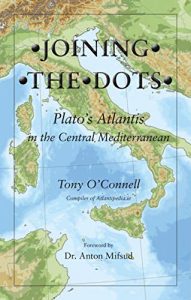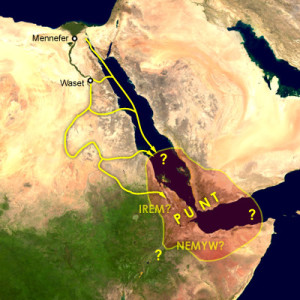Eulalio Eguia
Queen of Sheba *
The Queen of Sheba is one of the few ancient historical figures that has not been linked with Atlantis. Wikipedia refers to her as “a figure first mentioned in the Hebrew Bible. In the original story, she brings a caravan of valuable gifts for the Israelite King Solomon………..modern historians identify Sheba with the South Arabian kingdom of Saba in present-day Yemen and Ethiopia. The queen’s existence is disputed among historians.”(a)
In Arabia she was known as Bilqis, to the Christians of Ethiopia she was Makeda, while Josephus referred to her as Nicaule.
Nevertheless, she is mentioned from time to time on these pages, particularly regarding her identity and the time of her reign. In the 1950s Immanuel Velikovsky, proposed, in Ages in Chaos [039] that either six centuries were missing from Israel’s history or had six hundred ghost years crept into Egyptian history. One of the keys to his revised chronology was the identification of the Queen of Sheba as the Egyptian queen Hatshepsut.
This caused quite a stir at the time and generated a degree of support for Velikovsky. However, in 1986 John Bimson published a paper, ‘Hatshepsut and the Queen of Sheba’, debunking Velikovsky’s contention, which had the effect of eroding that support. Then in 1997, Damien Mackey re-ignited the controversy with a paper challenging Bimson’s conclusion(f) and so the debate continues(h).
There are a number of 21st-century commentators who still accept Velikovsky’s identification of Hatshepsut as the Queen of Sheba including Emmet Sweeney [1867.25] and Emmet Scott(d), Damien Mackey(f), as well as Ken Griffith & Darrell K. White(e) and, I might add, no lack of opponents either.
Eulalio Eguia jr. offered a different Egyptian identification suggesting Nefertiti instead of Hatshepsut(b). Riaan Booysen went further, not only agreeing with Eguia but proposing that Nefertiti was also Helen of Troy(c)!
Among the Ethiopians, there is a tradition that the Queen of Sheba and Solomon had a child, Menelik, who visited Jerusalem and returned to Ethiopia with the Ark of the Covenant. There is no evidence to support this tale which is thought to have been “originally created to legitimize Yukuno Amlak’s rule of the late 13th century AD who had killed the Zagwa king to obtain power.”
(a) https://en.wikipedia.org/wiki/Queen_of_Sheba
(b) Nefertiti – The Queen of Sheba | PDF | Tutankhamun | Akhenaten (scribd.com) *
(c) Thera and the Exodus – Graham Hancock Official Website
(d) Hatshepsut: Queen of Sheba: Scott, Emmet: 9780875869452: Amazon.com: Books (I suspect that Emmet Sweeney, a Scot, and Emmet Scott are the same person and share the same publisher)
Punt *
Punt is the name given to a land with which the ancient Egyptians traded. The leading theory is that it was located to the southeast of Egypt, roughly occupying what is now called ‘the Horn of Africa, although there is also a popular view that it was situated on the Arabian Peninsula. Others suggest that a combination of parts of both regions might be nearer the truth. An article from November 2016 elaborates on the claim for this identification(e).
Along with the many luxury goods that Punt supplied to Egypt were baboons, so it was interesting to read in 2020 that “a new study tracing the geographic origins of Egyptian mummified baboons finds that they were sourced from an area that includes the modern-day countries of Ethiopia, Eritrea, Djibouti, Somalia, and Yemen, providing new insight into Punt’s location.”(i). The investigation centred on the strontium levels found in the ancient remains.
A November 2023 an article by Miriam Fauzia returned to the possibility that the baboons offered clues to the location of Punt and once again focused on East Africa, specifically the Eritrean location of the legendary port city known to the Romans as Adulis(n).
Thor Heyerdahl in The Tigris Expedition [1921] also identified the region around Djibouti as the land of Punt.
In 2013, a short book [1567] by Ahmed Ibrahim Awale, placed Punt in the same region, namely, in Hargeisa, the capital of Somaliland. A favourable and well-illustrated review(f) of Awale’s book is worth a read. The worldhistory.org website has pointed out that the name of the Puntland State of Somalia may preserve a memory of the original mythical Punt(h).
However, Immanuel Velikovsky wrote at length about Punt and its location in Palestine in Ages in Chaos [0039]. He maintains that Punt is consistently described as being to the east of Egypt, which would rule out Somalia. Added to this, he claimed that the Queen of Sheba and Queen Hatshepsut were one and the same person, a view endorsed by historical researcher Dr. Eva Danelius (1898-1995).
Others, such as Eulalio Eguia jr, identify the Queen of Sheba with Nefertiti(l). Velikovsky’s comments are certainly worth a read. Emmet Sweeney has adopted both Velikovsky’s location for Punt and his identification of the Queen of Sheba(j). Damien Mackey offers new evidence to support Velikovsky’s claims(m).
By way of contrast, David Lorton has offered a series of criticisms of Velikovsky’s Punt/Sheba ideas(k).
Frank Joseph in his Atlantis Encyclopedia[0104.37] claims that “the Lands of Punt (are) often associated with the islands of Atlantis.” Joseph expands on this in an Atlantis Rising article(a) where he refers to an ancient Egyptian story of “The Shipwrecked Sailor” in which the ‘Serpent King’ is identified as master of the island of Punt, which again Joseph claims to be Atlantis.
More recently, a small number of commentators have identified Punt/Atlantis with Indonesia(b)(c). Dhani Irwanto, who is a leading advocate of an Indonesian Atlantis[1093] published in November 2015 an extensive article online(d) in which he specifically names the Indonesian island of Sumatera (Sumatra) as the land of Punt. He has now expanded this into a book, Land of Punt: In Search of the Divine Land of the Egyptians [1628]. Irwanto goes further and also identifies the mysterious land of Ophir in the Bible as Punt.
Xavier Séguin proposed that Punt along with Atlantis, Mu and Hyperborea were in fact satellites(g)!!!
(a) See: Archive 2790
(b) https://www.bibliotecapleyades.net/atlantida_mu/esp_atlantida_3a.htm
(c) http://www.lost-civilizations.net/true-history-atlantis-2.html
(d) https://atlantisjavasea.com/2015/11/14/land-of-punt-is-sumatera/
(f) The Mystery of the Land of Punt Unravelled – book review | Land of Punt (archive.org)
(h) https://www.worldhistory.org/punt/?visitCount=48&lastVisitDate=2021-4-9&pageViewCount=64
(i) https://www.sciencedaily.com/releases/2020/12/201215082048.htm
(j) https://www.hope-of-israel.org/expeditionpunt.html
(k) Hatshepsut, the Queen of Sheba, and Immanuel Velikovsky (archive.org) (new link)
(l) Nefertiti – The Queen of Sheba | PDF | Tutankhamun | Akhenaten (scribd.com) *
(m) (83) Solomon and Sheba | Damien Mackey – Academia.edu
Sweeney, Emmet John*
Emmet John Sweeney is a Scottish historian, who graduated from the University of Ulster in Northern Ireland. He has followed the lead of Immanuel Velikovsky and produced several books[520][845] arguing for a radical revision of the generally accepted chronologies of the early civilisations of the Eastern Mediterranean.
He controversially claims that “all the civilisations on both sides of the Atlantic arose more or less simultaneously, sometime between 1100 and 1200 BC” [700.202].
In Empire Of Thebes, Or, Ages In Chaos Revisited [1867] Sweeney returns to the work of Velikovsky and “seeks to complete the work which he commenced, identifying the problems Velikovsky could not solve, and bringing forward a great body of evidence not even mentioned by Velikovsky which supports his identification of Hatshepsut with the Queen of Sheba. Velikovsky was rejected by the academic establishment because of a number of contradictions in the chronology he outlined. Sweeney shows that despite some gaps and incompletions, his (Velikovsky’s) books were brilliant works of scholarship with much to recommend them. For decades now various scholars have attempted to solve the enigma. Yet the answer was stunningly simple and in front of us all the time. Empire of Thebes provides the solution and finally allows the possibility of a complete and satisfactory reconstruction of ancient history. This work calls for a much more radical shortening of ancient chronology and asserts that Velikovsky ran into a dead end because he placed too much reliance on the Bible as a chronological measuring rod.”
Velikovsky’s (and Sweeney’s) identification of the Queen of Sheba with Hatshepsut was recently endorsed in a paper by Ken Griffith and Darrell K. White (f). However, others, such as Eulalio Eguia, identify the Queen of Sheba with Nefertiti(g).
He further claims that the Egyptian pyramids were constructed around 800 BC(d) and that Atlantis was destroyed around the same period! This date is significant as it coincides with an event that led to devastation in Southern Germany and the Alps involving huge inundations and tilting of lake shorelines which could only be brought about by a very powerful seismic upheaval(b).
“His claim that the Great Pyramid was constructed around 850 BC, rather than 2550 BC, is viewed as unfounded sensationalism. Sweeney’s claims that the pyramid-builders would have needed steel tools to cut granite, basalt and diorite, is said to have been disproved by the researches of Denys A. Stocks, who shows (Experiments in Egyptian Archaeology, 2003) that granite, for example, can be worked by pounding it with a harder stone, such as basalt. Sweeney however has pointed out that while large granite surfaces can be ground down in this way, Pyramid Age sculptors must have been in possession of steel tools, since the carving of basalt and diorite portrait statues, which display details of eyes, nose, ears, etc, can only have been executed using very sharp and fine cutting-tools.”(e)
He has also tackled the Arthurian legend, regarding which he considers Stonehenge to have been Arthur’s ‘round table’. The blurb for his 2001 book Arthur and Stonehenge[918] goes further stating that “As for Arthur himself, he was the primitive bear-god “Artos”, the Celtic version of Hercules. Originally portrayed with a bearskin over his head and shoulders and carrying a great oaken club, he became the prototype of the Greek Hercules when Hellenic traders, braving the wild waters of the Atlantic in search of tin, heard his story from the Britons.”
Sweeney has now ventured beyond his comfort zone and devoted his talents to the Atlantis question. He argues for the existence of a large island in the Atlantic, whose remnants today are the Azores. He sees this island as a stepping-stone to the Americas, which is necessary to explain the evidence of transatlantic contacts in the very distant past. He also takes the opportunity to highlight weaknesses in radiocarbon dating (p218).
The Washington Times, which is owned by the ‘Moonies’, gave his book a favourable review(a)! The reviewer, Martin Sieff, a native of Belfast and Velikovskian catastrophist, is accused by Jason Colavito[915] of using his critique to promote Sweeney more as a catastrophist rather than as an atlantologist and does so without revealing Sieff’s catastrophist background.
A more critical review of Sweeney’s work can also be found elsewhere on the Internet(c).
(a) https://www.washingtontimes.com/news/2011/feb/25/book-review-atlantis/print/
(b) H. Gams and R. Nordhagen, Mitteil. der Geograph. Ges. in Munchen, XVI, H. 2 (1923), pp. 13-348. R. Sernander, ‘Klimaverschlechterung, Postglaciale’ in Reallexikon der Vorgeschichte, VII (1926); O. Paret, Das Neue Bild der Vorgeschuchte (1948), p.44.
(c) https://web.archive.org/web/20140416073952/https://wikibin.org/articles/emmet-sweeney.html
(d) https://www.algora.com/140/book/details.html
(e) Emmet Sweeney (wikibin.org)
(g) https://cread.jd.com/read/startRead.action?bookId=30564080&readType=1 *

